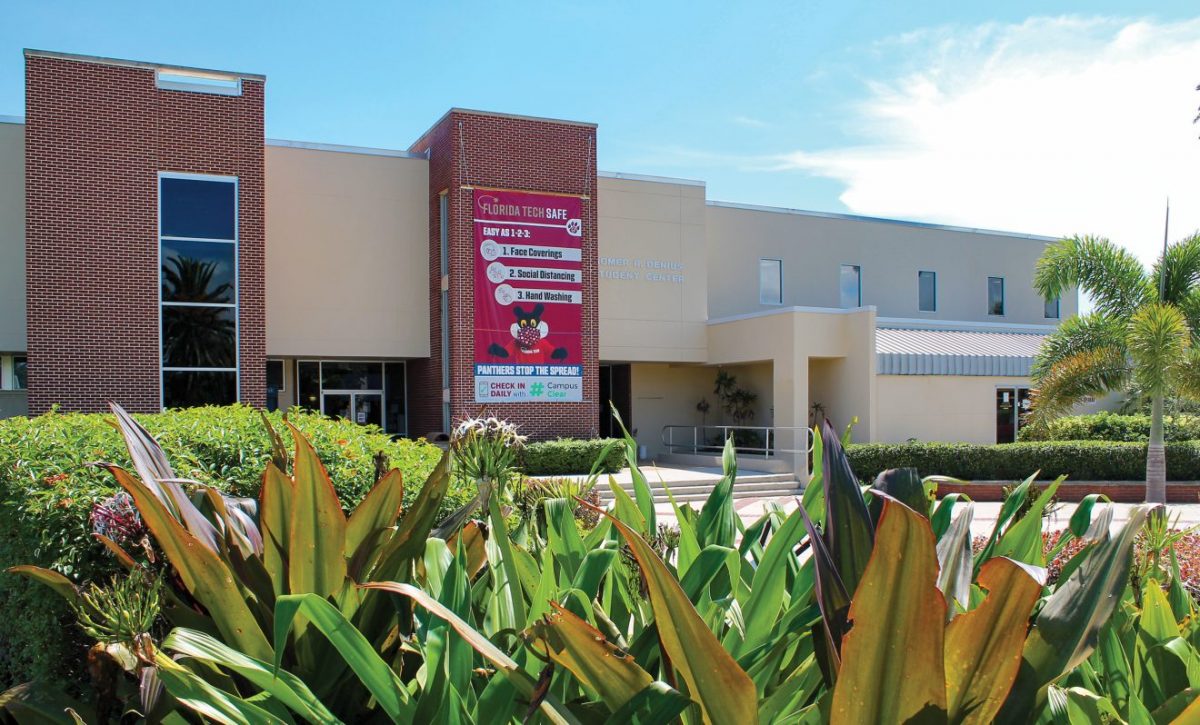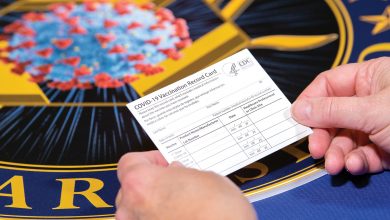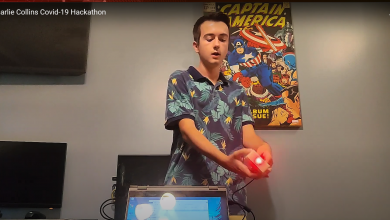A New Day
A look at the changes on campus and the potential for some alterations to remain long after the pandemic
The scene across the Florida Tech campus looks as one would expect at a university. Students are moving between classes, skateboarding, biking and walking. Some are lounging on the green spaces, clustered in small groups. Groundskeepers tend to the verdant landscaping.
But life at Florida Tech, as is the case for many universities, is quite different from how it may appear. Those same students who move around the campus have face coverings on. There are signs everywhere about social distancing.
There are deeper changes, as well. The first semester of in-person classes amid the coronavirus pandemic has led to some significant alterations—and some may end up outlasting this period of viral uncertainty.

The Student Perspective
Melanie Matos ’20 graduated earlier this year with a bachelor’s degree in chemical engineering and is pursuing her master’s degree in that field. Campus life now is different than it was during her undergraduate years, starting with seeing fewer students walking around campus. From an education standpoint, there initially was a learning curve, she said, not only for the students, but for professors as well. They all had to adjust to the technological requirements of in-person and online classes.
Melanie sees positive aspects of the adjusted learning experience. She believes introverted students are having a better handle on school due to changes to the campus experience, and immunocompromised students, such as herself, are able to have a safer educational environment. Florida Tech’s online option has also given greater opportunities for those who cannot make it to a classroom.
Melanie, who lives on campus, noted the differences in residential life under the university’s new safety protocols. The social aspect of residence life has changed—social distancing means less time with groups of her friends; she is not participating in organizations that helped keep her busy as an undergrad, and there are fewer dinners out or drinks at the bar. But these shifts in human interaction have produced welcome, personal touches in this unique era, such as the resident assistant who has alarms in her phone to remind her to text residents at noon and 6 p.m. to make sure they’ve eaten lunch and dinner.
This streamlining of social interaction has another benefit beyond minimizing risk, Melanie said: a greater focus on her studies as she works toward that master’s degree.
“It keeps me home a lot more, and then when I’m sitting at home, I’m like, ‘I should be doing something, because I have all this time, and it feels wrong to just sit around and do nothing all the time,’” Melanie said. “So, I feel like I have been a better student for it. I was never a horrible student or anything, by any means, but I did my homework three days before the deadline. Now, I do my homework two weeks before because I had nothing else to do.”
Melanie sees some value in considering keeping online and hybrid classes beyond the pandemic. Similar to the discussion of working from home and the flexibility that provides, distance learning is something she believes has ongoing value.
“There’s a million different ways to learn, and some people learn better visually, some people can see the text and PowerPoint slides and go from there and talk to the professor when necessary, and I think it’s really important because there are people I know that can’t make it to class every day,” Melanie said.
“It’s really awesome to see it is feasible to have classes online with the only difference being it takes professors maybe an extra two minutes to start up Zoom and make sure they’re recording,” she continued. “Those two minutes to help dozens, if not hundreds, of students on this campus would be awesome to see going forward.”
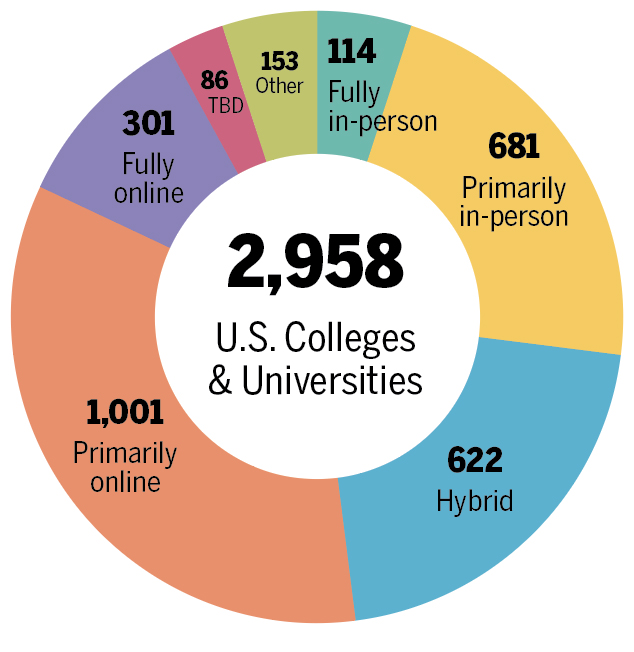
Davidson College has traced the reopening plans of nearly 3,000 U.S. colleges and universities via its College Crisis Initiative dashboard. As of Oct. 1, 2020, Florida Tech is included among the 681 institutions conducting classes “primarily in person,” with some courses online. Source: collegecrisis.shinyapps.io/dashboard
A Focus on Communication
Florida Tech’s Pandemic Response Team—formed this spring to help develop plans for classes, dining, housing, residence life, security and facilities in the COVID-19 era—continues to meet, adjusting and updating as needed. Through flexible measures that have been spurred by communicating with students, faculty and staff, Florida Tech has been able to provide a safe campus environment.
Krishna Patel, director of student wellness and programming, serves as the school’s COVID-19 case manager. Patel’s role streamlines a process that could become cumbersome with multiple areas involved by serving as a key link between university departments.
For Bino Campanini, chair, Florida Tech Pandemic Response Team, another vital part of the university’s success in maintaining a safe campus has been the people the administration has communicated with throughout this time: staff, faculty and students.
“Our faculty have really stepped up,” Campanini said. “To go from a traditional model to being told in March you’re going to go online, then after the summer you’re going to be in the classroom, but some of your students are going to be remote—the faculty has done a good job.”
He continued, “From an administration side, we have a deep admiration for our student body, and we feel like they’ve done an excellent job following the school’s plans, guidelines and protocols. Our student body has done a great job. When I’m walking around campus, the kids have their mask on, even when they’re outside.”
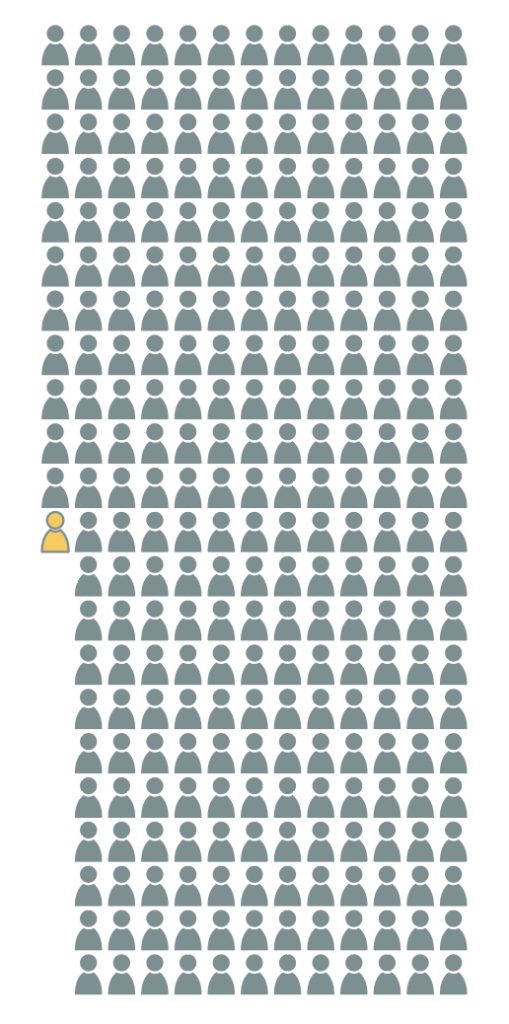
[Each icon represents approximately 21 people.]
By mid-fall 2020, a New York Times survey of more than 1,600 U.S. colleges and universities had revealed at least 130,000 cases of COVID-19 on campuses nationwide since the pandemic began. Of the 5,801 cases at 43 colleges and universities in Florida logged as of Oct. 1, 2020, only 21 connect to Florida Tech.
Source: nytimes.com/interactive/ 2020/us/covid-college-cases-tracker.html
Adapting Labs
The innovative approaches Florida Tech brought to the classroom and campus experience extended to another challenging facet of the university experience: labs. A combination of guidelines, communication and adaptivity guided the process.
The university is limiting the number of students in group projects to five and requiring the use of face coverings and other safety guidelines.
Scheduling was adjusted, including adding weekend access, to produce more lab time and additional sessions, often with help from graduate student assistants.
Florida Tech also split current lecture/lab courses, allowing students to take lecture via remote access in fall and lab in spring. The school also has cleaning stations across campus, as well as disinfectants at each classroom teacher workstation, allowing faculty the ability to disinfect the area after each class.
For biomedical and chemical engineering assistant professor Toufiq Reza, the need to keep his program’s research going to meet the deadlines of student graduation, while also reporting to funding agencies and submitting research proposals—and doing all of this while following pandemic protocols—has been a challenge. But he’s making it work.
After initially shutting down his lab for a couple of weeks during the spring, Reza and his team assessed how they could be productive while protecting the health and safety of their students.
Enforcing mask use, marking doors for entrance and exit only, having just three students work together at a time and other changes have allowed them to run the lab successfully.
The students in Reza’s program have also been vocal about what would be needed for them to feel safe in the lab. When Reza allowed students back into the building initially, he put together an action plan based on students’ safety requests.
Currently, the students limit the amount of time they’re in the lab by doing only experimental work in the building, then doing the publication and lab writing on their computers at home instead of using the ones in the facility.
As with Melanie, Reza sees some changes having staying power. He noted the use of Zoom and other teleconference tools to communicate and provide a hybrid learning experience, as well as stressing the importance of keeping a clean lab.
“We are learning these kinds of things, and I know we are supposed to learn it a long time ago, but these kinds of opportunity and challenges allow us to do it now,” Reza said. “I see us becoming more and more efficient.”
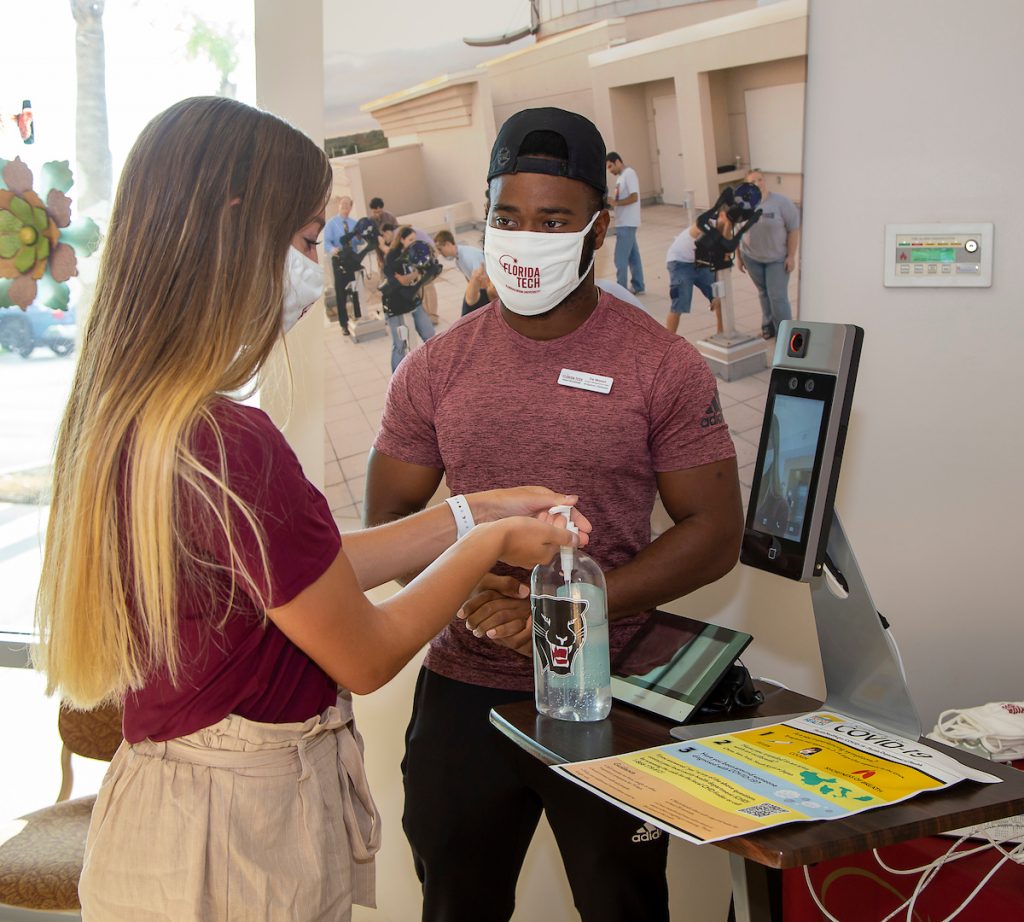
History Hits Home
Gordon Patterson, a historian and professor in the School of Arts and Communication, used this pandemic as a learning experience starting in the spring.
In March, as part of his Modern U.S. History course, his students wrote weekly journals comparing different aspects of the 1918–19 “Spanish flu” influenza pandemic, which killed 50 million people worldwide and over 675,000 in the United States, to the new coronavirus outbreak. While the assignments were initially met with apathy from the students, the virus’s impact on their lives would soon change their perspectives.
“I watched them go from this being a silly assignment to at least five of my students having had a grandfather, an uncle, a cousin, an aunt dead from this,” Patterson said. “That caused them to see how rapidly things can change, and that’s why I had them look at 1918 and 1919 in the context because I fear all of us will know someone who was touched by this disease. I hope what we have learned from this experience will help our community grow stronger.”
Students were asked to imagine that they were writing a journal that would be read by their future descendants. The journals demonstrated that Patterson’s students had learned a valuable lesson: Studying history is a critical element in responding to the challenges of the present. One student wrote to an imagined grandchild:
Though this (journal) has obviously helped me, I suppose I hope it helps you in the future as well. If you struggle with depression or anxiety, I hope you read this and no longer feel alone. If you’ve been looking forward to something and it is cancelled, I truly hope my words bring you some form of solace. If you are looking for a way to express how you’re feeling, I hope this encourages you to get your thoughts out of your own head and onto paper. And most importantly, if you are in the midst of a pandemic, I hope this helps you to process.
The stress and concern manifested in some of the journal entries can sometimes translate to class performance, Patterson noted, and has him thinking about how students are evaluated fairly. Some of the new pandemic adaptability in place across campus must also include being more aware of the stress around us, he said.
It also may mean reconsidering the traditional classroom dynamic.
“A class is a kind of community. The difference between a crowd and a community is that communities become aware of what helps one another. The traditional top-down model of education, the ‘sage on the stage,’ the wise woman or man standing in front of a classroom dispensing knowledge like Moses, needs to undergo a significant revision,” Patterson said. “I think that interaction will be more interrogatory, more interactive and more engaged. Professors need to listen as well as speak. The pandemic has taught us that we have much to learn and that we need—as citizens, students and, yes, professors—to be helpful to one another.”
This story was featured in the fall 2020 edition of Florida Tech Magazine. Read the full issue here.

